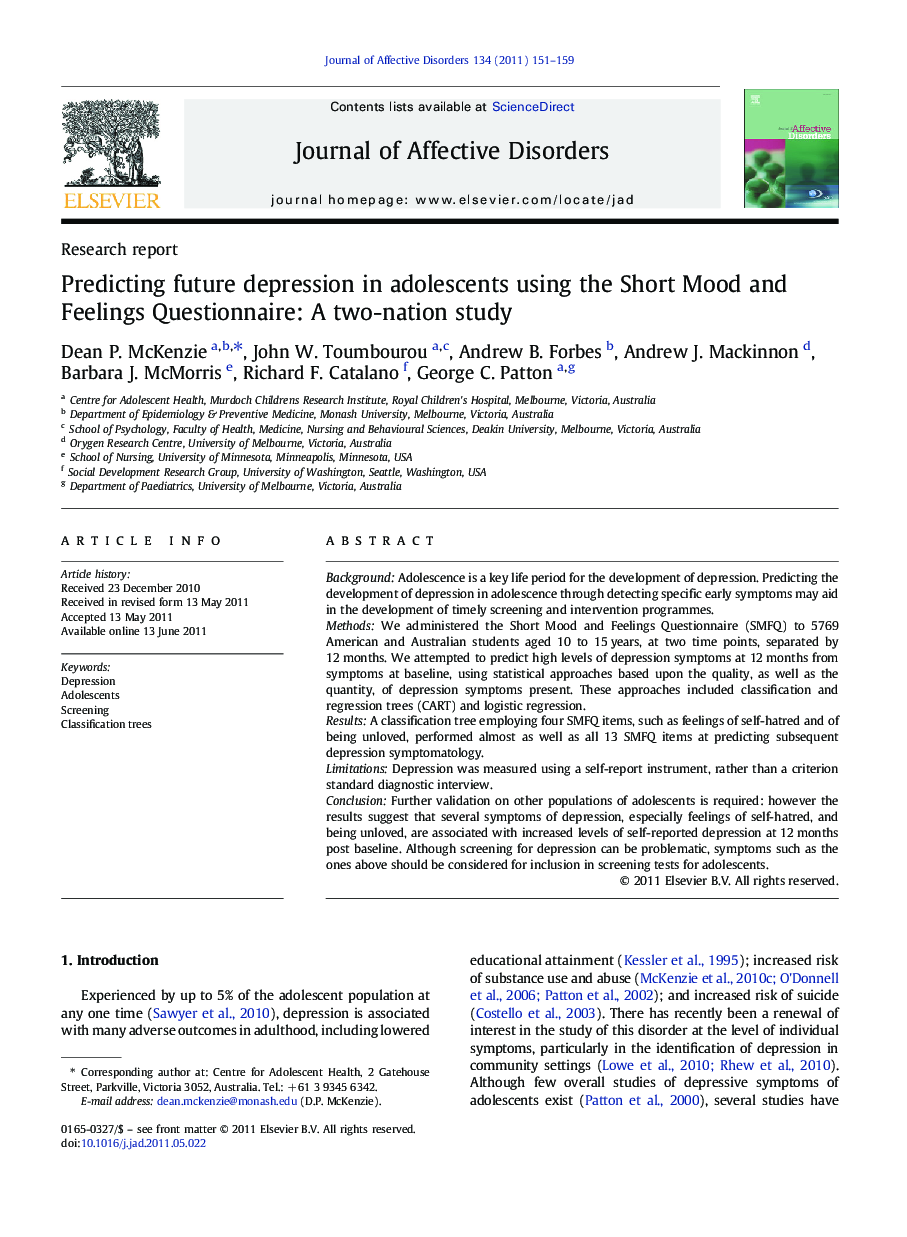| Article ID | Journal | Published Year | Pages | File Type |
|---|---|---|---|---|
| 6235133 | Journal of Affective Disorders | 2011 | 9 Pages |
BackgroundAdolescence is a key life period for the development of depression. Predicting the development of depression in adolescence through detecting specific early symptoms may aid in the development of timely screening and intervention programmes.MethodsWe administered the Short Mood and Feelings Questionnaire (SMFQ) to 5769 American and Australian students aged 10 to 15Â years, at two time points, separated by 12Â months. We attempted to predict high levels of depression symptoms at 12Â months from symptoms at baseline, using statistical approaches based upon the quality, as well as the quantity, of depression symptoms present. These approaches included classification and regression trees (CART) and logistic regression.ResultsA classification tree employing four SMFQ items, such as feelings of self-hatred and of being unloved, performed almost as well as all 13 SMFQ items at predicting subsequent depression symptomatology.LimitationsDepression was measured using a self-report instrument, rather than a criterion standard diagnostic interview.ConclusionFurther validation on other populations of adolescents is required: however the results suggest that several symptoms of depression, especially feelings of self-hatred, and being unloved, are associated with increased levels of self-reported depression at 12Â months post baseline. Although screening for depression can be problematic, symptoms such as the ones above should be considered for inclusion in screening tests for adolescents.
